 |
STARCANADA 2013 Keynote: Cool! Testing's Getting Fun Again
Video
The last exciting era in testing was the late ‘90s when the web turned technology on its ear, the agile movement overthrew our processes, and the rise of open source gave us accessible and innovative tools. However, since then, Jonathan Kohl finds it has been a lot of the same-old, same-old.
|
Jonathan Kohl, Kohl Concepts, Inc.
|
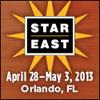 |
Deadlines Approaching? Budgets Cut? How to Keep Your Sanity
Slideshow
Testing projects have a habit of dissolving into chaos—and even strife—as deadlines approach and budgets are cut. When asked to do the impossible, risk management and mitigation tools can be the only way for testers to survive. Geoff Horne presents a proven method he uses for...
|
Geoff Horne, NZTester Magazine
|
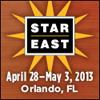 |
The Pathologies of Failed Test Automation Projects
Slideshow
Most test automation projects never die—they just become a mess and are redone. Initial solutions that start well and are full of promise often end up as brittle and unmaintainable monsters consuming more effort than they save. Political feuds can flourish as different automation solutions...
|
Michael Stahl, Intel
|
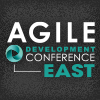 |
The Enterprise Product Owner: It Takes a Village
Slideshow
In classic Scrum textbooks, the Product Owner (PO) permanently hangs out in the agile team room, churning out a stream of user stories, regularly prioritizing the backlog, deciding color schemes for screen design-all while keeping the team focused and making coffee. In an enterprise agile project, it is physically impossible for one person to do everything the PO role requires. Elena Yatzeck believes the enterprise PO must be a team role, where the different people move in and out of their PO responsibilities in a disciplined and predictable way. To illustrate, Elena leads a simulation that takes you through a full enterprise agile project, providing shared PO resources to help you with each aspect of the project. She offers PO advice on organizational change models, team design techniques, extended story templates, and tips for backlog grooming.
|
Elena Yatzeck, JPMorgan Chase
|
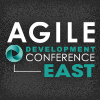 |
The Next Level of Agile: DevOps and Continuous Delivery
Slideshow
Mature agile organizations are introducing continuous delivery as a crucial step to realize their goal of delivering business value rapidly. Andrew Phillips highlights implementation issues about how agile development can fit with enterprise release management policies and governance needs. Andrew outlines proven practices and selection criteria for tools to help you address these issues. Then, he presents a DevOps case study demonstrating the continuous delivery process for building, packaging, deploying, and testing a complex application. Find out about deployment support for server and resource configurations, application binaries, database upgrades and rollbacks, messaging, and enterprise service buses. With the right tools and processes you can develop an open, extensible framework that supports additional services and platforms.
|
Andrew Phillips, XebiaLabs Inc.
|
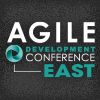 |
A Big Helping of DevOps with Career Advice on the Side
Slideshow
For decades-with the exception of agile-dev followers-the IT community has continued to build and protect its departmental silos. Project management, business analysis, development, testing, DB administration, and operations are just a few of the specializations that are carved out and institutionalized. Agile practices seek to eliminate the walls and empower people to deliver the highest value to the business. DevOps is the latest effort in this direction-bringing developers, testers, and operations together to replace their silos with a continuous collaboration pipeline. Paul Peissner introduces DevOps and explains how it is a key to transitioning from continuous integration (creating the finished software product immediately) to continuous delivery (making the product immediately available to users) and adding tremendous new business value.
|
Paul Peissner, CollabNet
|
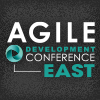 |
It's About Products Not Projects: Product and Portfolio Roadmaps If you are managing your portfolio using projects, and not products, you may be missing opportunities to deliver more business value to your organization. Product and portfolio roadmaps are a strategic tool that you can use to align business goals and value to product delivery plans. Ellen Gottesdiener explores the why's, what's, and how's of product roadmaps including the different types of product roadmaps, steps for building and sustaining product roadmaps, key planning inputs, who should be involved, and techniques for exploring and evaluating features along the roadmap. Roadmaps articulate how your products will achieve their vision, help uncover technology requirements, communicate to internal and external customers, and provide a sound foundation for planning. Learn how roadmaps can help you deliver the right products, address customer needs, and make tough choices that will deliver strategic value.
|
Ellen Gottesdiener, EBG Consulting, Inc.
|
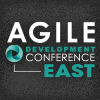 |
Doing Agile in a Waterfall World? Without Breaking Your Neck
Slideshow
Although many of us want to use only agile practices, we often work alongside teams with strong waterfall traditions. If you’ve had trouble finding ways for your agile ideas to co-exist peacefully with traditional lifecycles, this session is for you. Jared Richardson describes key integration points between waterfall and agile teams, and demonstrates the best ways to work together-or to perform clean hand-offs, if necessary. He shows how to use adaptive planning while still providing accurate progress status to traditional PMO counterparts. Jared reviews popular agile practices and discusses how they best function in a hybrid environment. Together, you and Jared will build a common vocabulary, examine two project models-one traditional and one agile, and then combine them in a hybrid that keeps the best of both worlds.
|
Jared Richardson, RoleModel Software
|
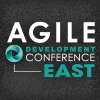 |
Disciplined Agile Delivery in IT: A Full Lifecycle Approach
Slideshow
The good news: Agile methods deliver superior results compared to traditional approaches. The bad news: For IT projects, mainstream agile methods-Scrum, Extreme Programming (XP), and Agile Modeling (AM)- provide only part of the overall solution. Agile IT projects require some time and effort for upfront planning at the start and activities for sophisticated deployment scenarios at the end. Additionally, most agile projects in large IT organizations cannot escape compliance with governance standards. Mark Lines describes and explores the realities of agile development in enterprise IT environments. Discover how IBM’s freely available Disciplined Agile Delivery (DAD) process framework combines common practices and strategies from mainstream agile methods to address the full delivery lifecycle-from project initiation to solution release into production.
|
Mark Lines, UPMentors
|
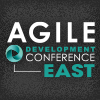 |
CMMI® to Agile: Options and Consequences
Slideshow
If you long for greater agility in your process-oriented or CMMI world, this session is for you. Paul McMahon shares how organizations can integrate agile approaches with CMMI and its key process area requirements. He discusses the advantages and disadvantages of different approaches taken by two organizations-one a CMMI Level 3 and the other a Level 5-to embrace agile principles and practices. To ensure your organization doesn't jeopardize its CMMI compliance with agile methods, Paul shares an approach that uses techniques such as asking key questions to focus objectives, pruning your processes, using the CMMI less formally, and keeping your "must dos" packaged separately from guidelines. He describes and discusses examples of each technique. Learn why the two organizations took different approaches, why one achieved its goals, and why the other fell short.
|
Paul McMahon, PEM Systems
|

